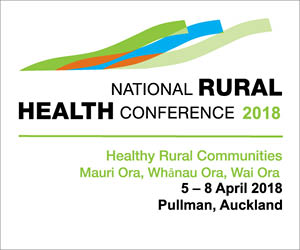Unhealthy homes and income inequity are some of the ‘big picture’ factors that are included in new asthma guidelines for health professionals caring for Kiwi children and adolescents.
The just launched Asthma and Respiratory Foundation NZ child and adolescent asthma guidelines are designed to help nurses, doctors and other health professionals – delivering asthma care in the community to emergency departments – to provide simple, practical and evidence-based guidance for the diagnosis and treatment of asthma in children and adolescents up to 15 years of age.
The new guidelines – developed by a team of health professionals under the guidance of Professor Innes Asher – include a shift from the ‘medical’ focus of the previous guidelines* to taking a holistic look at the ‘big picture’ factors that influence asthma outcomes.
Debbie Rickard, a child health nurse practitioner at Capital & Coast DHB who helped develop the guidelines, said the new guidelines were not just medical and encompassed many other factors for health professionals “such as how to support families to manage their child’s condition, and looking at the big picture of factors that contribute to child asthma, such as housing, environment and barriers to accessing services”.
A quick reference guide to the new Guidelines was published last week in the latest New Zealand Medical Journal (NZMJ), which said that the new guidelines were informed by recent New Zealand reports describing the growing impact of asthma – especially on children – and the inequities suffered by Māori, Pacific peoples and low-income families.
Lorraine Hetaraka-Stevens, the National Hauora Coalition nurse leader who was also part of the guidelines team, said underpinning the new guidelines was eliminating inequities. She said they included a focus on workforce, systems and broader determinants that impact on asthma, such as income and housing. The guidelines, she believed, also enabled consistent standards of care, which could the work of a wide range of health professionals working in a variety of settings; for example, school-based nurses and rural health professionals.
Dr Stuart Jones, Medical Director of the Asthma and Respiratory Foundation NZ, agreed that addressing issues of social inequities is of paramount importance “if we are going to address the disparities in childhood respiratory illnesses and set all New Zealanders up with good lungs for life”.
“I think every child in New Zealand should have the right to be raised in a warm, dry, well-ventilated house, free of cigarette smoke and have good access to medical care,” said Jones.
David McNamara, respiratory paediatrician at Starship Children’s Health, said the guidelines were an important step in reducing disparities and improving outcomes for children with asthma and their whānau.
“The guidelines address the biggest challenges in asthma management: patient education, follow-up, motivation and improving adherence,” said McNamara. “By focusing on these we hope to lift the health and quality of life of children with asthma and reduce the burden of acute sickness and hospitalisation.”
Click here to download the full 33-page Asthma and Respiratory Foundation NZ child and adolescent asthma guidelines.
*The new guidelines are a complete update of the Paediatric Society of New Zealand’s Management of Asthma in Children aged 1–15 years, published back in 2005.




















